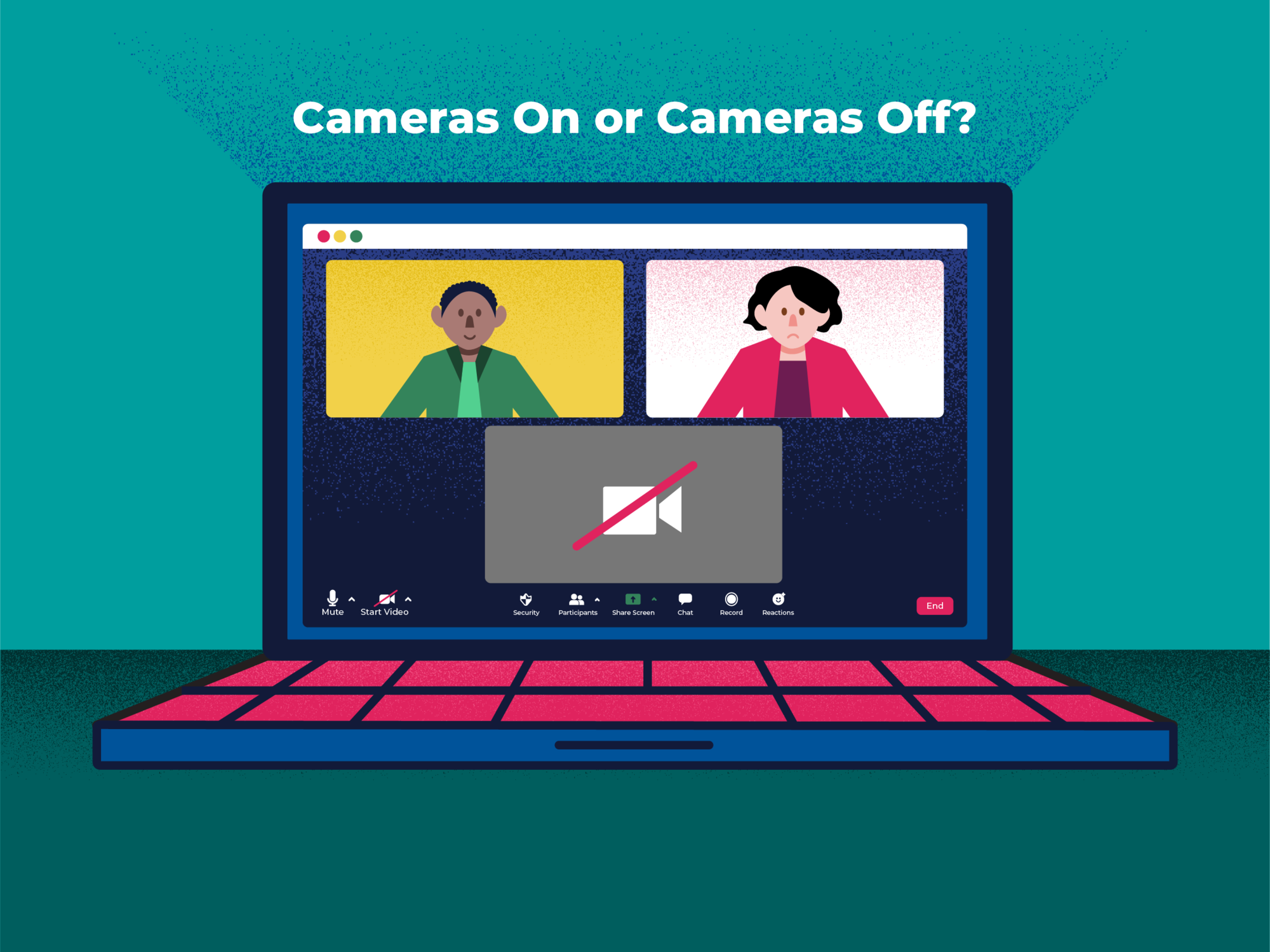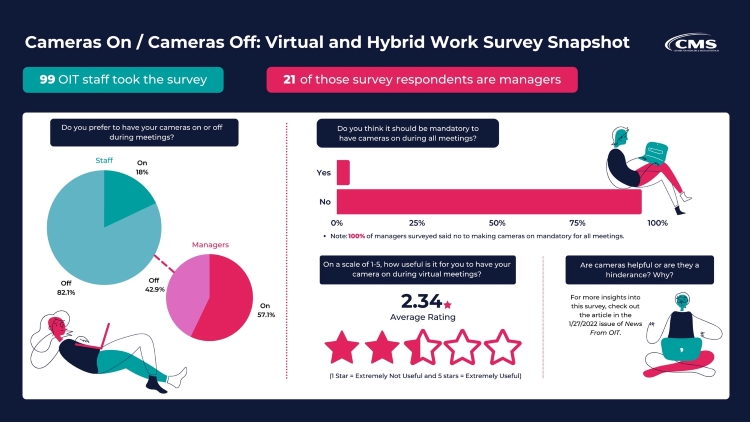OIT Cameras On/Cameras Off Survey Results

Google “Zoom camera meme” and you’re immediately rewarded with thousands, if not millions, of hilarious memes all poking fun at people’s aversion to being up close and personal on camera. Since the beginning of the pandemic and the increase in people working from home, we have all experienced the ups and downs of having our cameras on during virtual meetings.
A live video feed during a virtual meeting can be helpful or it can be a hindrance, depending on the situation and who you ask. The OIT Communications Team recently gathered the results of a survey that reveals some interesting thoughts and feelings about cameras on vs. cameras off.

While the majority of OIT staff who responded to the survey (73 out of 99) prefer to have their cameras off, a fair amount of them acknowledge that having cameras on during virtual meetings can be helpful for overall communication. In multiple written responses, the survey-takers reported that cameras help them feel more connected to their team and make it possible to read facial expressions or body language for social cues.
There is evidence that working from home causes people to feel isolated from their peers and cameras can relieve that. As one respondent put it, “Seeing people also makes us feel more connected.”
Several survey respondents stressed the benefit of having cameras on during small group meetings when the team needed to collaborate or engage in an activity. Other situations like team building workshops, virtual happy hours, and one-on-one meetings were other examples of times when it is appropriate to have cameras on.
While these are all good reasons to have cameras on, “eyestrain” and “Zoom fatigue” were reported issues that respondents had with on-camera meetings. However, distraction was the most commonly stated reason for wanting cameras off.
In fact, 20 out of 99 responses mention distraction specifically. These distractions were due to looking at other people’s video feeds instead of listening to the presenter, or more candid moments such as when pets or children make an unexpected entrance.
Feelings of self-consciousness about one’s appearance or the state of their background was another factor in people’s preference for having cameras turned off. “There is pressure to watch your facial expressions, how you look, and if you do not feel good…you feel odd touching your face, sneezing, and coughing,” said one survey respondent.
Ultimately, an overwhelming majority (95/99) of survey-takers thought that cameras should not be mandatory for all meetings. Of the 21 managers who took the survey, all agreed that cameras should not be mandatory for every meeting.
Feedback revealed some best practices to consider for virtual meetings. One response stated that active participants, such as those giving a presentation, should have their camera on for the benefit of those listening. One respondent pointed out a potential exception to this, saying, “there are times when it makes sense to leave the camera off even when actively participating (e.g., internet/bandwidth issues, distractions in background).”
Another restated that when the camera is off, “a photo of the employee should be posted during meetings to match a face with a voice.” If you know you are presenting and will be on camera, take time to ensure you have a well-lit, quiet space and a blank wall or background filter behind you.
The benefits and drawbacks to cameras will continue to evolve as we use virtual meeting tools more and more. One thing is very clear – people want to be empowered to make their own decision about whether or not to have their camera on.

